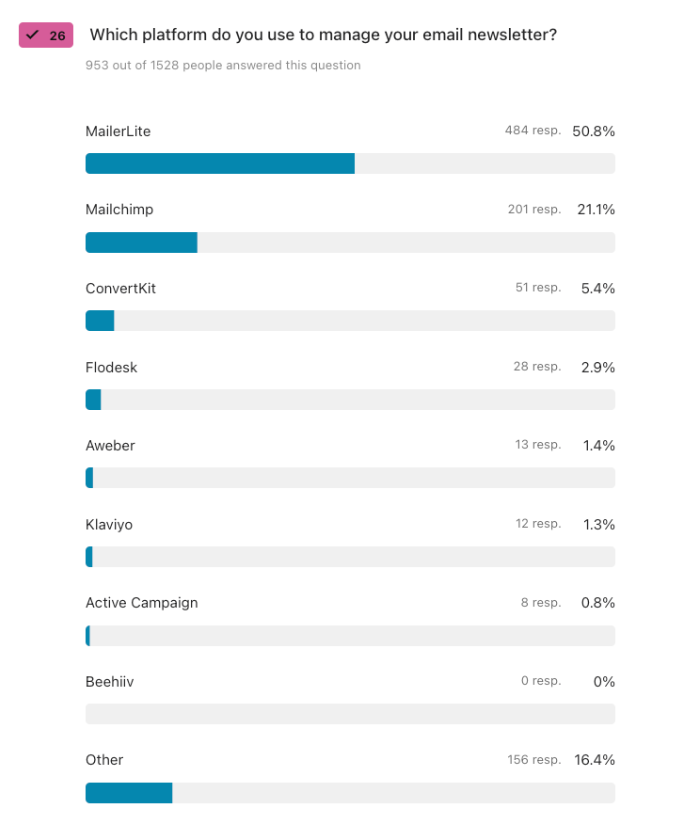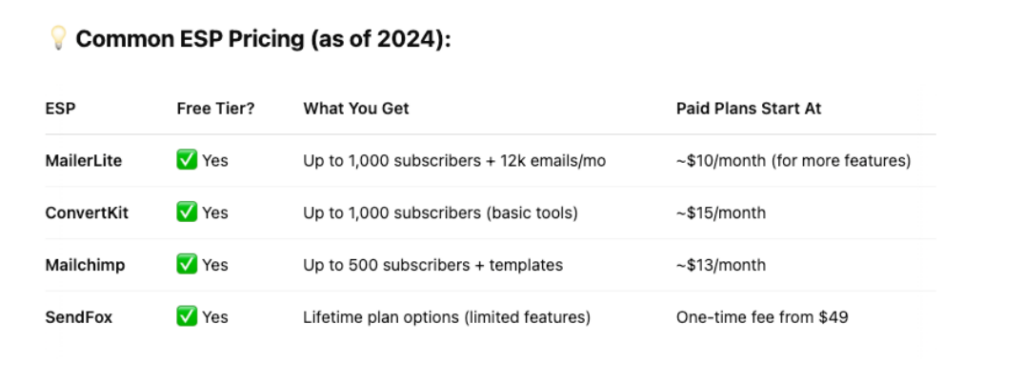Whether you haven’t started an email list yet or you’ve got one that’s gathering dust, you’re not alone—and you’re not too late. An email list is one of the most valuable assets an author can have. It gives you a direct line to your readers, builds lasting relationships, and empowers you to take control of your marketing. But let’s be honest: getting started—or knowing what to do next—can feel overwhelming.
In our latest Speaker Series, I had the pleasure of stepping into the spotlight to share what I’ve learned over the past decade about helping authors connect with readers, specifically through the power of email.
During the session, I walked through how to build and grow an email list, covering everything from the very first subscriber to more advanced list-building strategies. In this post, I’m focusing on the fundamentals. I’ll explain why your email list is one of your most valuable assets, how to build momentum without feeling overwhelmed, and how to make list nurturing a natural part of your author routine.
Why Email Marketing?
Email marketing may sound like a buzzword, but it is one of the most effective ways for authors to communicate with readers. Unlike social media, where algorithms determine what your audience sees, email marketing provides a direct line to your readers’ inboxes.
But it’s more than just sending messages—it’s about creating intentional, purposeful communication that drives action.
Here are some key reasons why email marketing remains a cornerstone for authors:
- Daily Habit: Email is one of the most consistent ways to reach readers. Most people check their email multiple times a day.
- Opt-In Marketing: Readers have actively chosen to hear from you, which makes them more likely to engage with your content.
- Direct Access: You control the messaging, the timing, and the content – no algorithm interference.
- Cost-Effective: Email marketing offers one of the highest ROIs of any marketing channel. According to industry data, email marketing can generate a return of $36 for every $1 spent.
- Consistent Communication: A regular cadence of emails helps to build trust, foster connection, and maintain reader interest over time.
Getting Started with Email Marketing: The Basics
Before you dive into email marketing, you need two essential components:
1. Your Email List
Your email list is more than a collection of addresses – it’s a curated group of readers who have given you permission to communicate with them directly. Building this list is the first step, and it requires a clear strategy.
- Who’s on your list? Fans, friends, family, beta readers, and potential readers.
- What do you need to collect? At a minimum, the subscriber’s email address. You can also ask for a first name to make your emails more personal.
- How do you collect emails? Through sign-up forms, lead magnets on your author website, and back matter calls to action.
2. Your ESP (Email Service Provider)
An ESP is the software that allows you to manage your list, send emails, and track performance. Here’s a list of popular ESPs that are well-suited for authors:
- MailerLite
- MailChimp
- ConvertKit
- Substack
- SendFox
Each of these platforms offers free plans that can help authors get started without a major financial commitment.
Step 1: Pick an ESP
So, how do you decide which ESP is right for you? Most of these platforms offer a free plan, so you can test the waters without dipping into your promo budget, but as you get more sophisticated with your email marketing, you’ll likely want to leverage some more premium features. As you can see, most authors that we polled used MailerLite, but every author is different, and you’ll want to see which platform works best for you.
Step 2: Build Your Email List – The Foundation
Before spending a single dollar on advertising, start with a seed list of 20-25 contacts. This initial group will help you get comfortable with sending emails and refining your messaging. Here’s how to get started:
Start Small: The Seed List
- Friends, Family, and Coworkers: Ask close contacts to sign up.
- Beta Readers and Early Fans: These are people who already know and love your work.
- Social Media Followers: Post a sign-up link and encourage your followers to join your list.
Once you’ve established a basic list, commit to sending a regular email at least once a month. Consistency is key in maintaining reader engagement.
Step 3: Create Your Welcome Email – The First Impression
The welcome email is a crucial part of email marketing. It’s your digital handshake – an opportunity to set the tone, introduce yourself, and establish expectations.
What to Include in Your Welcome Email:
- A Warm Greeting: Address the reader by name if possible.
- Introduction: Share a brief story about yourself, your work, and why you write.
- What to Expect: Clearly outline what readers will receive and how often they will hear from you.
- Deliver the Goods: If you promised a lead magnet (free book, chapter, etc.), provide the link.
- Engaging Call to Action: Ask a simple question to prompt a response. This helps to build a connection and maintain deliverability.
Here are some examples of effective welcome emails that check all of the above boxes (in very different ways):
Step 4: Decide When You Will Send
One of the most common email marketing roadblocks for authors? Not knowing when to hit send. To break it down simply, pick a day, any day – just make it consistent.
You don’t have to send an email weekly if that feels overwhelming. Start with a monthly email on the first of every month. Or maybe every other Wednesday. The key is to set a schedule and stick to it. Over time, your readers will come to expect your emails – and you’ll get into the habit of sending.
Not sure what to say every month? Keep it simple. Share what you’re working on, what you’re reading, and any updates about your books. Keep it personal, keep it relevant, and keep showing up.
Step 5: Start Sending On A Schedule
You’ve chosen your sending schedule – now it’s time to actually do it. Start sending – even if your list is tiny. The only way to get comfortable with email marketing is to do it consistently.
Even if you’ve only got five people on your list, you’re not just emailing, you’re training your marketing muscles.
Every message is a chance to connect, refine your voice, and build a habit that’ll pay off when your audience grows. Because it will. And when it does? You’ll be ready.
Step 6: Build Your Email List Further
Once you’ve sent 2-3 emails on a regular schedule, you’re ready to start growing your list. Building your list further is a post in itself, so we’re not diving into all the strategies here today – but trust me, there are plenty.
Want to go deeper? Gold and Platinum Members can access the full recording of the April Speaker Series session. You’ll learn:
- Advanced list-building techniques, including reader magnets and subscriber giveaways.
- How to leverage your book’s back matter to drive sign-ups.
- Best practices for running targeted Facebook Ads to attract new subscribers.
Ready to level up? Upgrade to Premium here.
How Written Word Media Can Help
Ready to take your email marketing to the next level? Written Word Media offers several tailored services to help authors grow and engage their email lists, including:
- Subscriber Surge Giveaways: Attract targeted readers through genre-specific giveaways.
- Reader Reach Facebook Ads: Drive sign-ups through professionally managed ad campaigns.
- Promo Stacks: Include email sign-up CTAs in your eBooks when running Freebooksy, Bargain Booksy, or Red Feather Romance promos.
Final Takeaways
Before pouring money into growing your list, focus on building the habit of consistent communication. Once you’ve developed a rhythm and are comfortable with your email content, then consider exploring more advanced strategies like reader magnets or paid advertising.
- Start Small: A seed list of 20-25 subscribers is plenty for getting started.
- Be Consistent: Establish a regular sending schedule, even if it’s just once a month.
- Nail the Welcome Email: Set the tone, deliver on any promised freebies, and invite interaction.
- Keep It Simple: Don’t overcomplicate your emails. Share what you’re working on, what you’re reading, or what’s coming up next.
- Track Your Progress: Pay attention to open rates, click-through rates, and unsubscribes. You don’t need to obsess over every number, but keeping an eye on trends will help you refine your strategy.
Want More Content Like This?
Register for our next Speaker Series! Each month, we host live Speaker Series sessions with book marketing and self-publishing experts. Anyone can join the live sessions, and Gold & Platinum Members can watch the recordings (including the unabridged version of this invaluable session on email) anytime!




Very useful piece this.
I totally agree but I still can’t get my website to agree to taking an email list @nd I don’t know why. I guess I’m going to have to find a schoolchild to help me!
Thanks for this article. I’ve just started one. I’ve sent out 2 to about 23 people so far and, despite a bit of a learning curve due to some unexpected glitches, I enjoy doing it. I’m using the same company that’s hosting my website, which reduces the need for things like domain authentication, so it’s a bit simpler.